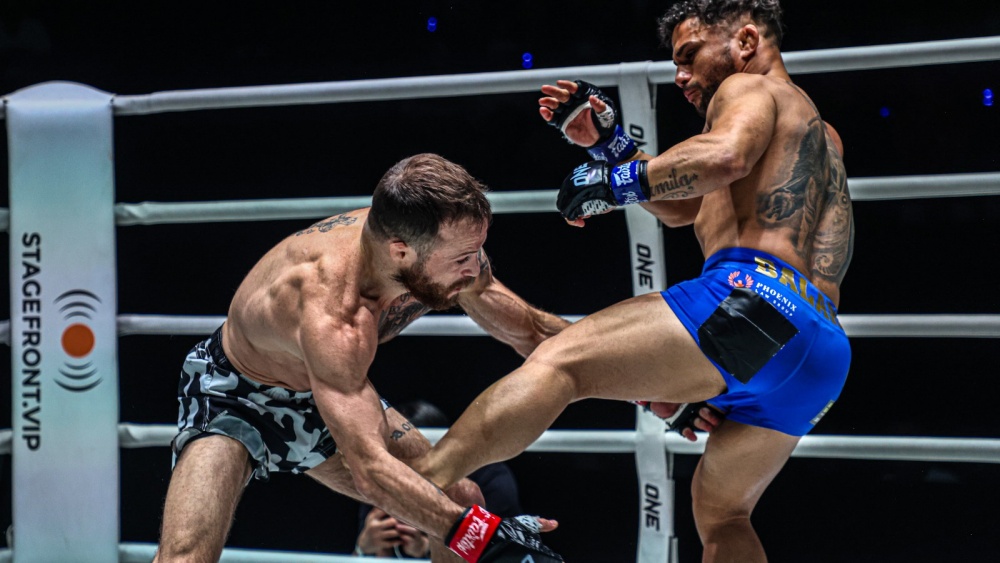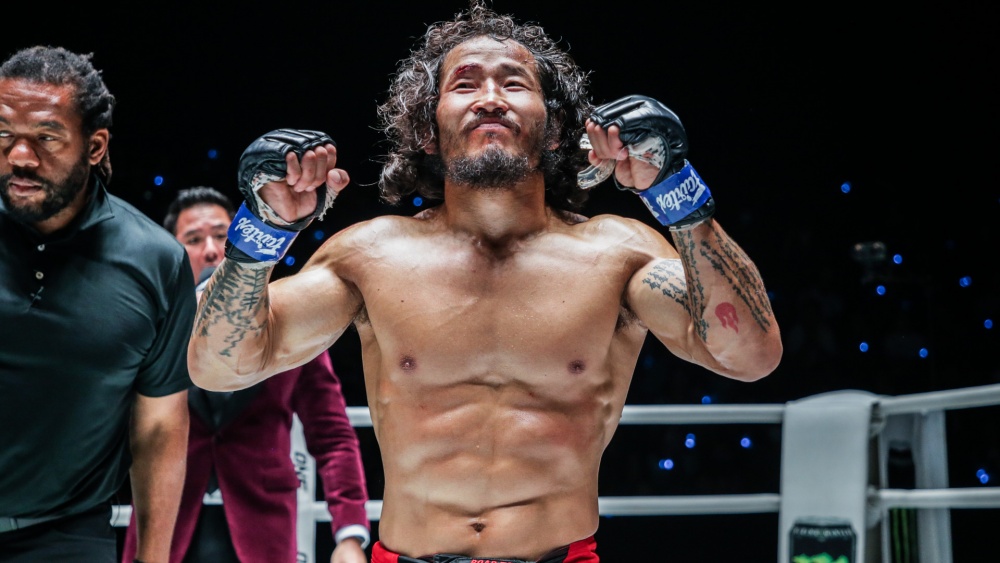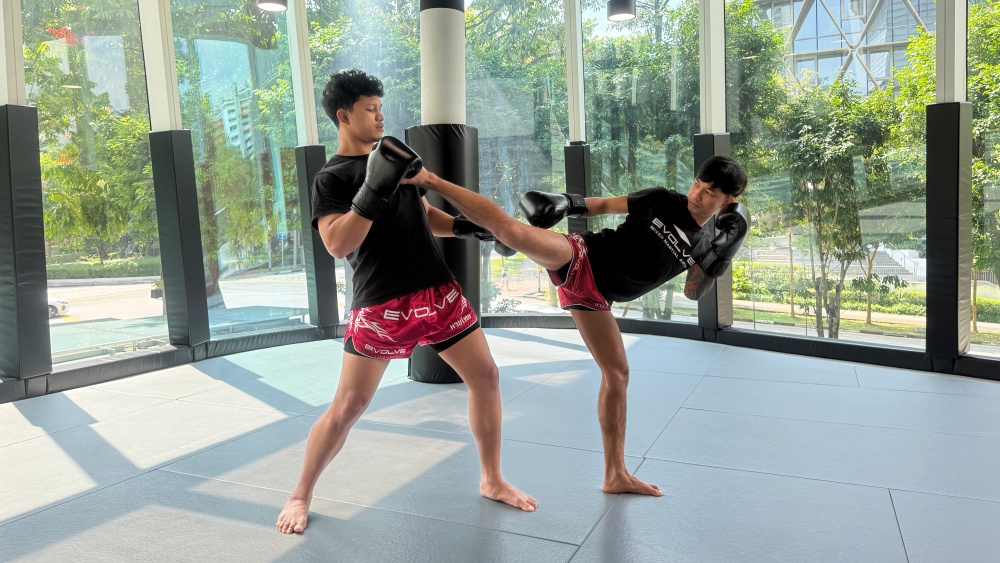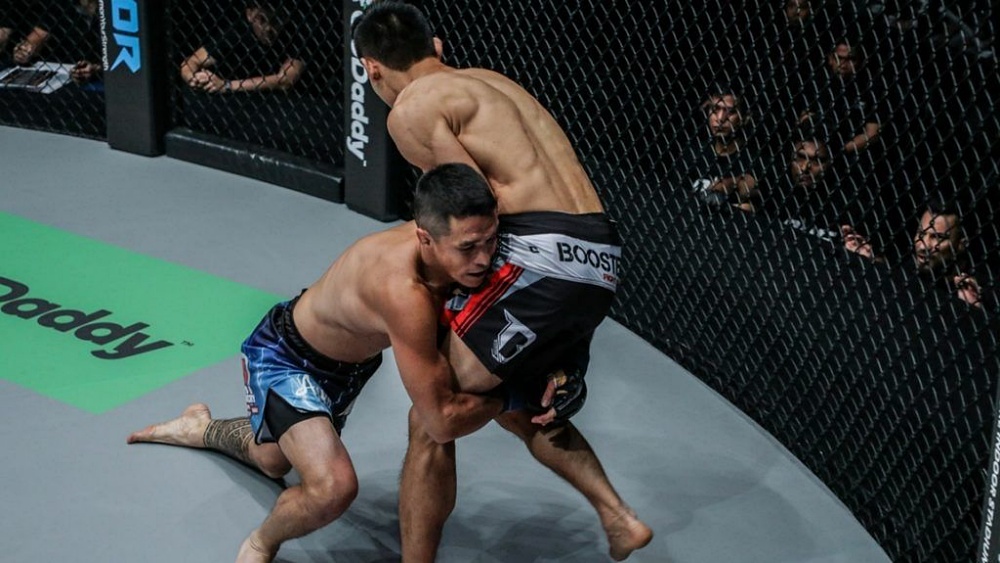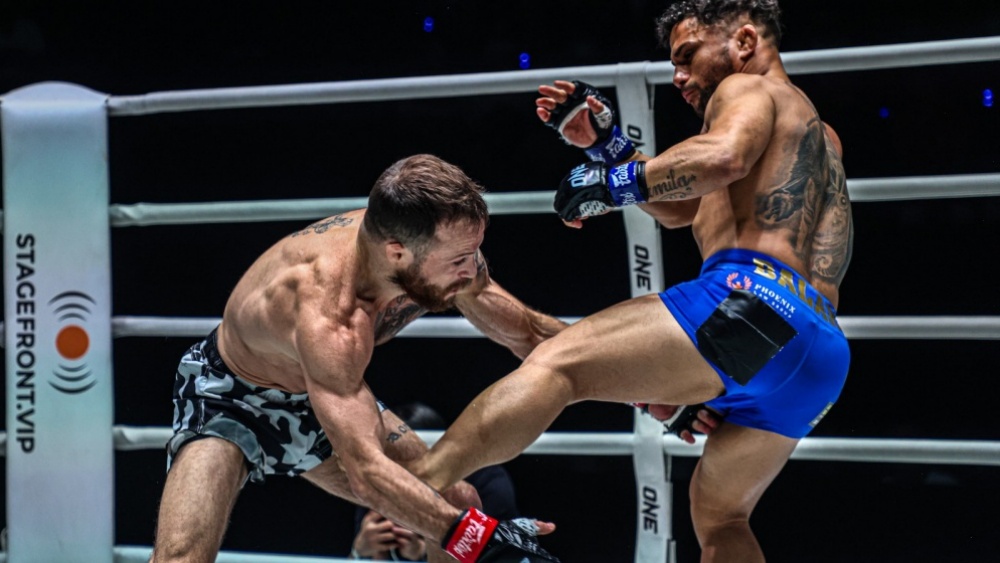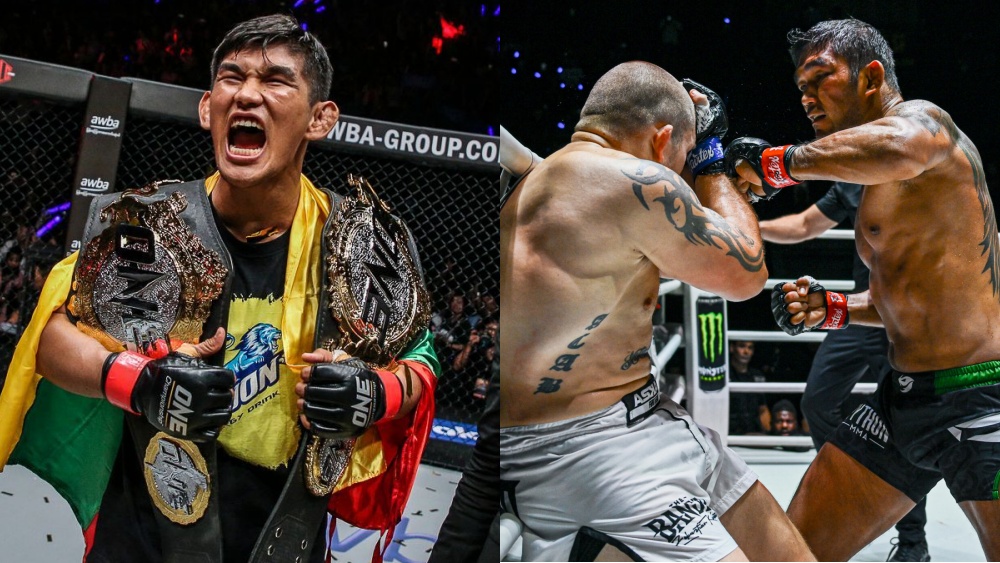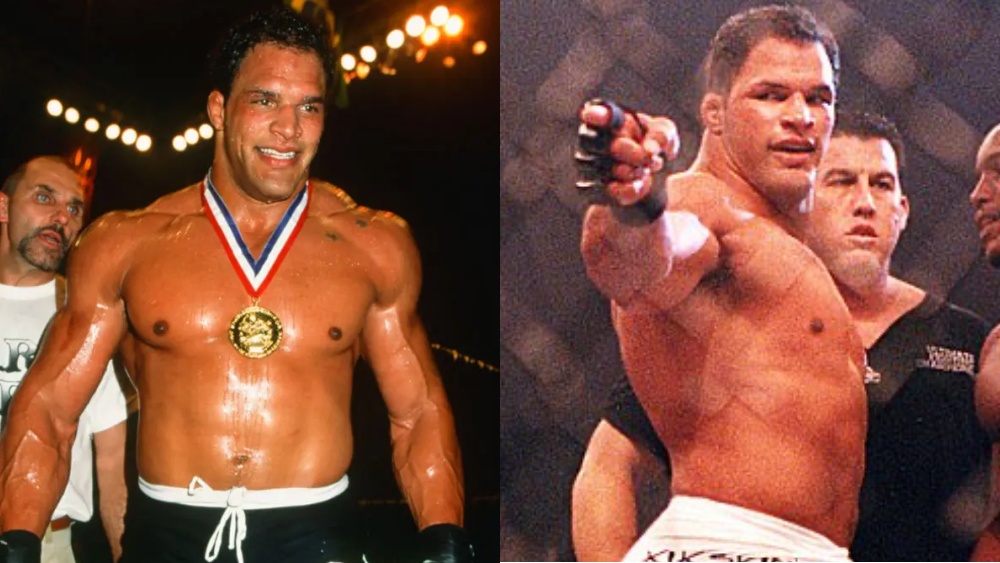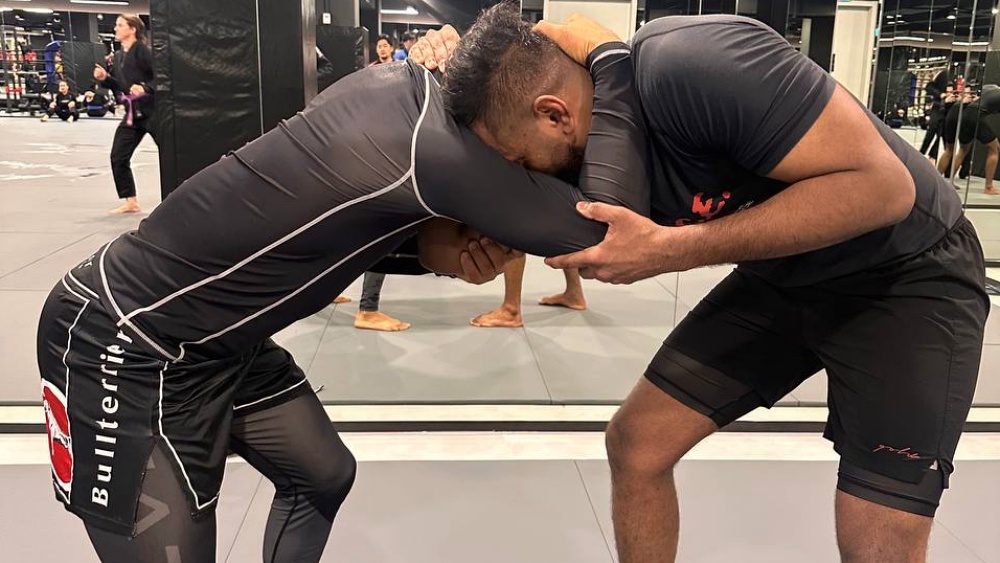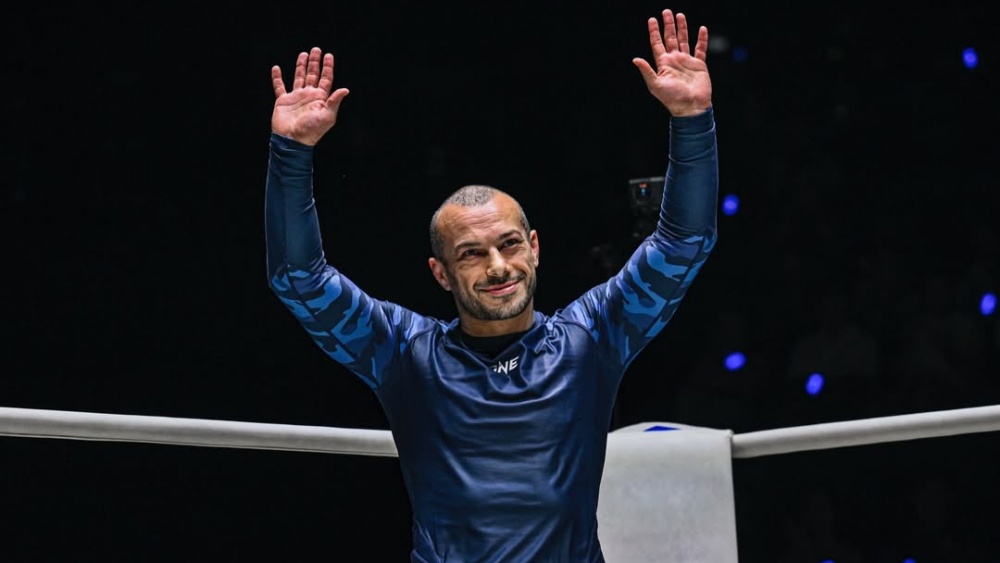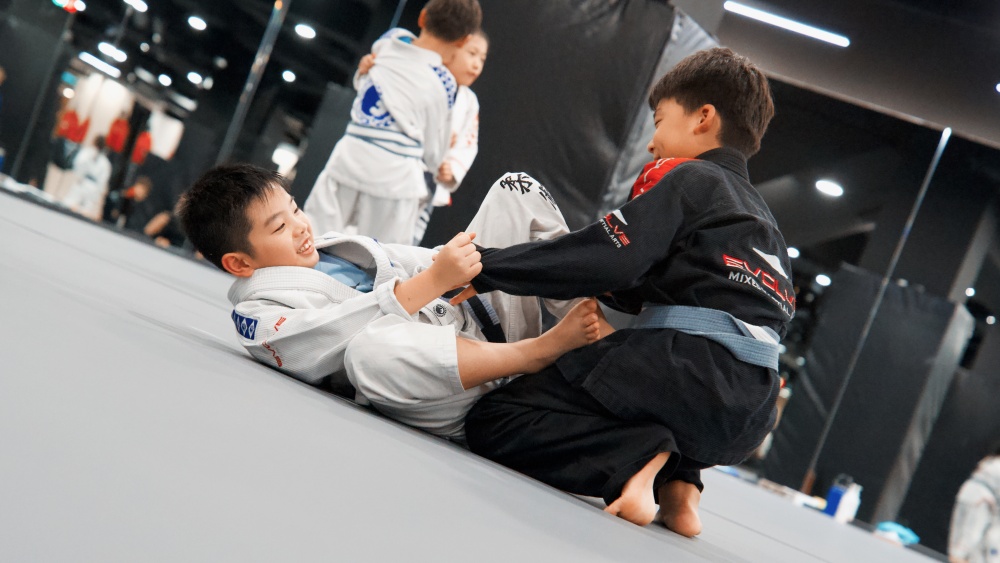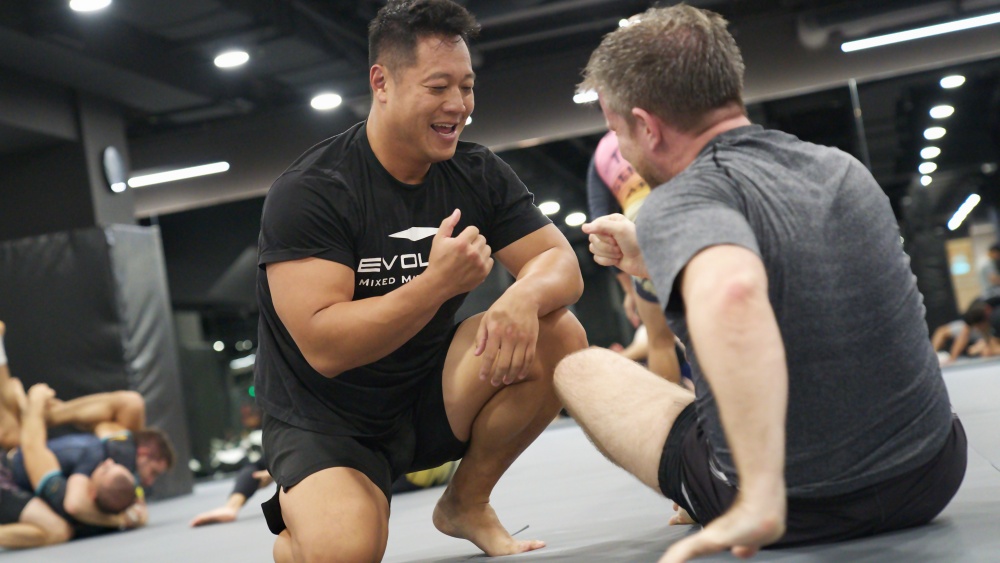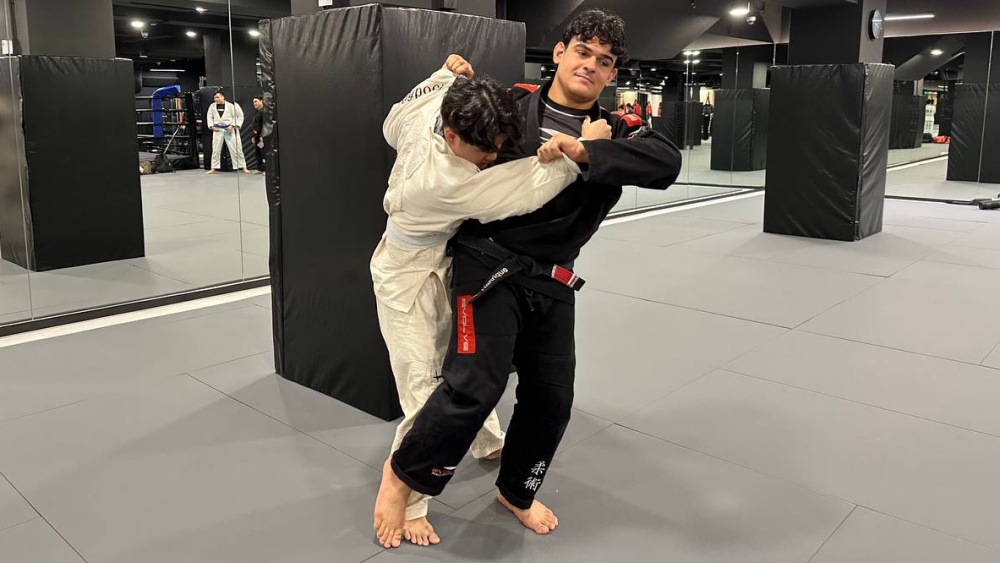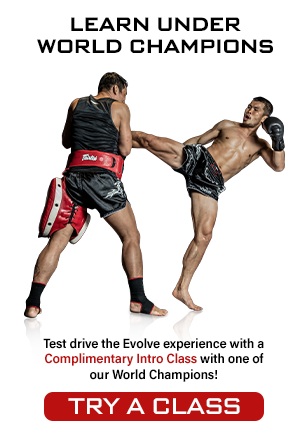One of the most incredible things about mixed martial arts (MMA) is the thrilling game of chess that’s played whenever you step on the mat. You must constantly think of ways to solve problems your training partners create for you while they try to fight their way out of traps you set for them.
One of the biggest puzzles that grapplers have to solve during competitions is getting into range to shoot for takedowns or clinch positions without eating knees or uppercuts in the process.
Closing the distance is an art that grapplers must master if they want to avoid getting forced to stand and bang in MMA. This article will explore some of the ways you can effectively close the distance on opponents to force them to grapple with you.
Understanding The Range Game
Knowing where you stand is the most vital ability you must develop to improve your ability to close distances on opponents. The three major ranges in combat sports are:
- Long Range: This is the striker’s playground where they can pick you apart with weapons like roundhouse kicks, jabs, and straights. Try to keep the time spent at this range to a minimum when going against more skilled strikers.
- Mid Range: The mid-range is the danger zone for grapplers since you’re close enough to shoot in, but your opponent also has some decent counter options, like knees, uppercuts, or sprawling out. Setting up your takedowns is a must at this range.
- Close Range: This is where you ideally want to be as a grappler. You’re close enough to clinch or shoot in for a takedown, while your opponent barely has enough room to generate power if they try to counter with strikes.
Your goal as a grappler should be to spend as little time as possible in mid-range. Go all in and secure a clinch at close range, or wait for an opportunity to shoot in from the edge of long range. You’re much better off getting peppered with jabs, crosses, and the occasional kick at long range than you are eating uppercuts, hooks, elbows, and knees at mid-range.
Closing The Distance For Takedowns
After learning about the various range and the pros and cons of each, let’s look at some tips to improve your ability to close distances on opponents and force grappling exchanges.
1) Use Feints To Create Openings
Feints are invaluable when it comes to keeping strikers guessing. It’s one of the most powerful things you can do during striking exchanges, yet so many fighters, even at the professional level, don’t use them enough.
Not using feints during your fights makes it considerably easier for opponents to anticipate your next move since all your movements reveal your intentions. Feinting causes opponents to second-guess themselves while creating opportunities you can exploit.
Some of the most effective feints for grapplers who prefer to spend most of their time in the cage on the mat include:
- Jab Feints: Feinting your jab at an opponent could draw out a reaction that might leave an opening for you to shoot in. For example, your opponent might try to parry the punch, which means their arms aren’t by their waist to defend against a takedown.
- Feint Level Changes: Dropping your level as if shooting for a takedown is another effective feint for grapplers. You can throw strikes at their head if they drop their hands to defend. If they hesitate to react, you know they won’t be quick enough to stop your shot.
- Footwork Feints: Use your footwork to confuse opponents by constantly changing footwork patterns. For example, you can step backward as an opponent bombards you with combos to get them to overcommit, leaving them vulnerable to takedowns.
Use feints moderately during fights for optimal effectiveness. Use them too often, and opponents will ignore them. Find the perfect balance between feints and strikes to keep your opponents guessing, creating the ideal opening for a takedown.
2) Master Head Movement
Watch some old highlights of Mike Tyson to see how much easier it is to close distances when you have good head movement. Good head movement can be the difference between getting tagged as you close the distance or landing in a clinch unscathed.
Some drills you can use to improve your head movement include:
- Duck And Roll Drill: Practice slipping punches and rolling underhooks by tying a rope or something similar between two posts, like the opposing sides of a boxing ring. Work your way through the rope as you move your head.
- Mirror Drills: Stand in front of a mirror and mimic evasive movements. Visualize incoming punches and evade them with head movement.
- Pendulum Movement: Rock your upper body back and forth like a pendulum to build momentum. This helps to develop a rhythm that makes it more challenging for opponents to time their shots against you.
Head movement isn’t just about defense when you’re a grappler. Use it to create opportunities for clean entries. Every strike you evade with head movement creates an opportunity to counter with a takedown or secure a clinch.
3) Close The Distance With Footwork
Quick footwork makes it easier to control distances between you and opponents, allowing you to step into close range to initiate grappling positions whenever you want. Master footwork techniques like the shuffle step, sidestep, and how to cut angles.
Combine your feints, head movement, and sharp footwork, and you’ll be as slick as an eel as you close the distance to secure a clinch or takedown.
4) Entering Safely with Strikes
Strikes aren’t just for strikers; use them as a tool to set up your takedowns. For example, you can use jabs to distract opponents as you step closer to them, low kicks to slow down their movement, and overhands to make them pay for biting on takedown feints.
Always commit to strikes when you throw them since half-hearted strikes leave you vulnerable to counters.
5. Time Your Entries
Timing your takedowns greatly increases their effectiveness. For example, you can counter a jab with a well-timed shot or use your opponent’s forward pressure against them by shooting in as they advance
Give These Tips A Try
Figuring out ways to close the distance against opponents will considerably impact your ability to impose your will as a grappler inside a cage. Use feints, head movements, and footwork to keep opponents guessing as you look for opportunities to take the fight into your domain. Next time you’re up against a striker while hunting for a takedown, try these tips—one of them might just help you secure the finish!”
You may also like:
5 Unorthodox Strikes That Took MMA by Surprise
How Dagestan Produced The Best Grapplers In Wrestling And MMA
